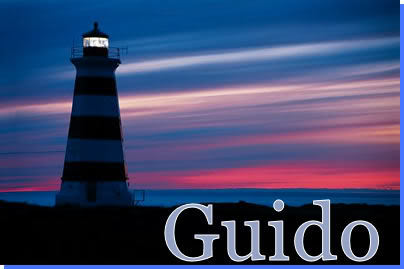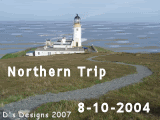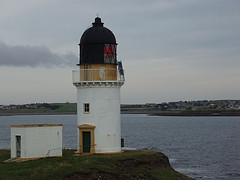Came across this page regarding lightning safety on the National Weather Service page. Cautions apply to anyone, not just those in the USA.
Summer is the peak season for one of the nation's deadliest weather phenomena— lightning. Safeguarding U.S. residents from dangerous lightning is the goal of this Website. The campaign is designed to lower lightning death and injury rates and America's vulnerability to one of nature's deadliest hazards.
In the United States, an average of 66 people are killed each year by lightning. In 2004, there were 32 deaths attributed to lightning, down from 44 thanks in part to increased education and safety. In 2005, there were at least 43 deaths confirmed deaths and 172 confirmed injuries. The injury number is likely far lower than it should be because many people do not seek help or doctors do not record it as a lightning injury.
People struck by lightning suffer from a variety of long-term, debilitating symptoms, including memory loss, attention deficits, sleep disorders, numbness, dizziness, stiffness in joints, irritability, fatigue, weakness, muscle spasms, depression, and an inability to sit for long.
Lightning—The Underrated Killer
In the United States, there are an estimated 25 million cloud-to-ground lightning flashes each year. Lightning can be fascinating to watch, but it is also extremely dangerous. During the past 30 years, lightning killed an average of 67 people per year in the United States based on documented cases. This is more than the average of 65 deaths per year caused by tornadoes and the average of 16 deaths per year caused by hurricanes. However, because lightning usually claims only one or two victims at a time, and because lightning does not cause the mass destruction left in the wake of tornadoes or hurricanes, lightning generally receives much less attention than the more destructive weather-related killers. While documented lightning injuries in the United States average about 300 per year, undocumented injuries caused by lightning are likely much higher.
Lightning Safety Awareness: Education is Key
Few people really understand the dangers of lightning. Many people don't act promptly to protect their lives, property and the lives of others because they don't understand all the dangers associated with thunderstorms and lightning. The first step in solving this problem is to educate people so that they become aware of the behavior that puts them at risk of being struck by lightning, and to let them know what they can do to reduce that risk. Coaches and other adults who make decisions affecting the safety of children must understand the dangers of lightning.
Watch for Developing Thunderstorms
Thunderstorms are most likely to develop on warm summer days and go through various stages of growth, development and dissipation. On a sunny day, as the sun heats the air, pockets of warmer air start to rise in the atmosphere. When this air reaches a certain level in the atmosphere, cumulus clouds start to form. Continued heating can cause these clouds to grow vertically upward in the atmosphere into "towering cumulus" clouds. These towering cumulus may be one of the first indications of a developing thunderstorm.
The Lightning Discharge: Don't Be a Part of It
During a thunderstorm, each flash of cloud-to-ground lightning is a potential killer. The determining factor on whether a particular flash could be deadly depends on whether a person is in the path of the lightning discharge. In addition to the visible flash that travels through the air, the current associated with the lightning discharge travels along the ground. Although some victims are struck directly by the main lightning stroke, many victims are struck as the current moves in and along the ground. While virtually all people take some protective actions during the most dangerous part of thunderstorms, many leave themselves vulnerable to being struck by lightning as thunderstorms approach, depart, or are nearby.
An Approaching Thunderstorm: When to Seek Safe Shelter
Lightning can strike as far as 10 miles away from the rain area in a thunderstorm. That's about the distance you can hear thunder. When a storm is 10 miles away, it may even be difficult to tell a storm is coming.
IF YOU CAN HEAR THUNDER, YOU ARE WITHIN STRIKING DISTANCE. SEEK SAFE SHELTER IMMEDIATELY!
The first stroke of lightning is just as deadly as the last. If the sky looks threatening, take shelter before hearing thunder.
The 30-30 Rule
Use the 30-30 rule where visibility is good and there is nothing obstructing your view of the thunderstorm. When you see lightning, count the time until you hear thunder. If that time is 30 seconds or less, the thunderstorm is within 6 miles of you and is dangerous. Seek shelter immediately. The threat of lightning continues for much longer period than most people realize. Wait at least 30 minutes after the last clap of thunder before leaving shelter. Don't be fooled by sunshine or blue sky!
If it is cloudy or objects are obscuring your vision, get inside immediately. It is always safer to take precautions than to wait.
Outdoor Activities: Minimize the Risk of Being Struck
Most lightning deaths and injuries in the United States occur during the summer months when the combination of lightning and outdoor summertime activities reaches a peak. During the summer, people take advantage of the warm weather to enjoy a multitude of outdoor recreational activities. Unfortunately, those outdoor recreational activities can put them at greater risk of being struck by lightning. People involved in activities such as boating, swimming, fishing, bicycling, golfing, jogging, walking, hiking, camping, or working out of doors all need to take the appropriate actions in a timely manner when thunderstorms approach. Where organized sports activities take place, coaches, umpires, referees, or camp counselors must protect the safety of the participants by stopping the activities sooner, so that the participants and spectators can get to a safe place before the lightning threat becomes significant. To reduce the threat of death or injury, those in charge of organized outdoor activities should develop and follow a plan to keep participants and spectators safe from lightning.
Indoor Activities: Things to Avoid
Inside homes, people must also avoid activities which put their lives at risk from a possible lightning strike. As with the outdoor activities, these activities should be avoided before, during, and after storms. In particular, people should stay away from windows and doors and avoid contact with anything that conducts electricity. People may also want to take certain actions well before the storm to protect property within their homes, such as electronic equipment.
Helping a Lightning Strike Victim
If a person is struck by lightning, medical care may be needed immediately to save the person's life. Cardiac arrest and irregularities, burns, and nerve damage are common in cases where people are struck by lightning. However, with proper treatment, including CPR if necessary, most victims survive a lightning strike, although the long-term effects on their lives and the lives of family members can be devastating.
Summary
Lightning is a dangerous threat to people in the United States, particularly those outside in the summer. With common sense, we can greatly reduce the number of lightning deaths. When thunderstorms threaten, get to a safe place, stay there longer than you think you need to, stay away from windows and doors and avoid contact with anything that conducts electricity



 News came through that a breeding unit at the
News came through that a breeding unit at the  I would just like to link to this entry in journal
I would just like to link to this entry in journal 

 Last autumn, a team from Edinburgh University spent some time on the
island setting traps to capture the mice live and take them to
Edinburgh for safekeeping. Whilst the mice were away, it wasn't the
cats that were dancing, and certainly not the rats. They were going to
be treated to a dose of poison. So, the dapper ship MV Spanish John II was
chartered to transport canisters of rat poison to Canna, one day in
October this year. As she was chugging round the Isle of Rum, a call
came on the VHF radio. An American warship, on manoeuvres in the area,
was warning a vessel on its portside to move away, as it was in its
safety zone. The skipper of the Spanish John didn't take
notice, because he was on the starboard side of the American vessel.
However, he was the only one there. The warnings were repeated six
times, with increasing urgency. The master of the Spanish John now
began to panic, and he tried shouting at the USS Klakring, to
no avail. Another message came through on the VHF, ordering the black
vessel with the white superstructure to pull away. The Spanish John hasn't
got a white superstructure, but the white drums with poison could be
misinterpreted as such. Then another four verbal warnings came to the Spanish John to pull away, or else the Klakring
would open fire. The skipper did pull away, but not sufficiently. Four
loud bangs, followed by four red glowing dots moving at speed from the Klakring would indicate that four rounds had been fired. The Spanish John
was not hit, and a Navy spokesman insisted that the American vessel was
not authorised to fire live weapons. The manoeuvres had been widely
broadcast and advertised, but may not have got through to the crew of
the Spanish John. The latter vessel continued on its innocent passage to Canna, where the rats are currently being exterminated.
Last autumn, a team from Edinburgh University spent some time on the
island setting traps to capture the mice live and take them to
Edinburgh for safekeeping. Whilst the mice were away, it wasn't the
cats that were dancing, and certainly not the rats. They were going to
be treated to a dose of poison. So, the dapper ship MV Spanish John II was
chartered to transport canisters of rat poison to Canna, one day in
October this year. As she was chugging round the Isle of Rum, a call
came on the VHF radio. An American warship, on manoeuvres in the area,
was warning a vessel on its portside to move away, as it was in its
safety zone. The skipper of the Spanish John didn't take
notice, because he was on the starboard side of the American vessel.
However, he was the only one there. The warnings were repeated six
times, with increasing urgency. The master of the Spanish John now
began to panic, and he tried shouting at the USS Klakring, to
no avail. Another message came through on the VHF, ordering the black
vessel with the white superstructure to pull away. The Spanish John hasn't
got a white superstructure, but the white drums with poison could be
misinterpreted as such. Then another four verbal warnings came to the Spanish John to pull away, or else the Klakring
would open fire. The skipper did pull away, but not sufficiently. Four
loud bangs, followed by four red glowing dots moving at speed from the Klakring would indicate that four rounds had been fired. The Spanish John
was not hit, and a Navy spokesman insisted that the American vessel was
not authorised to fire live weapons. The manoeuvres had been widely
broadcast and advertised, but may not have got through to the crew of
the Spanish John. The latter vessel continued on its innocent passage to Canna, where the rats are currently being exterminated.























